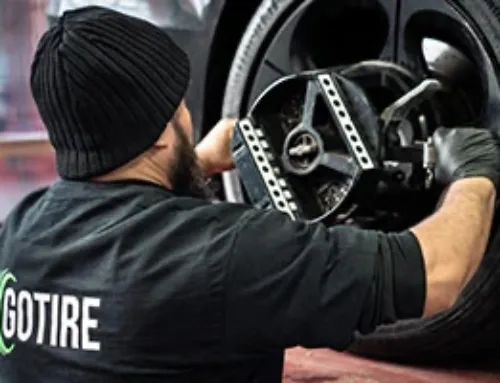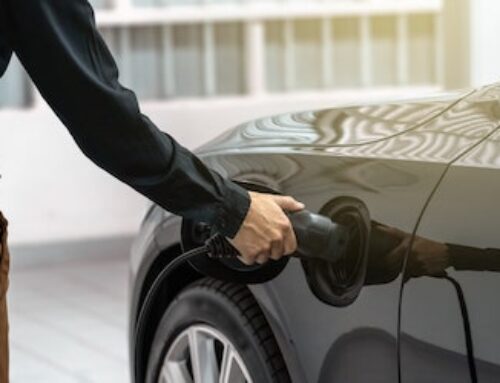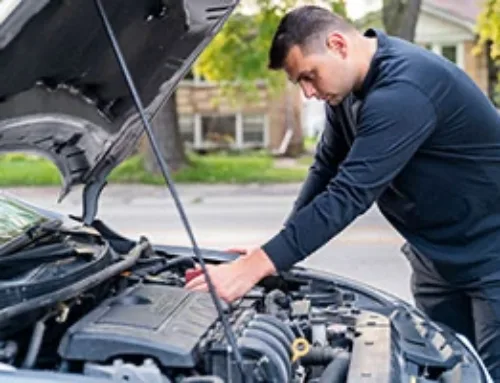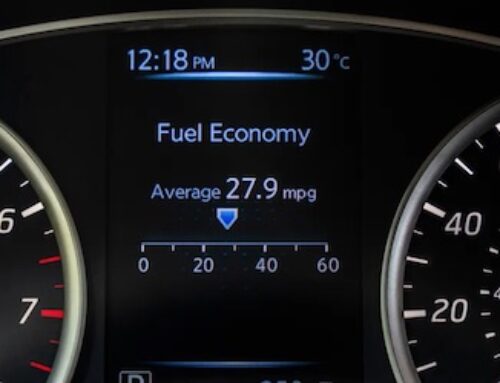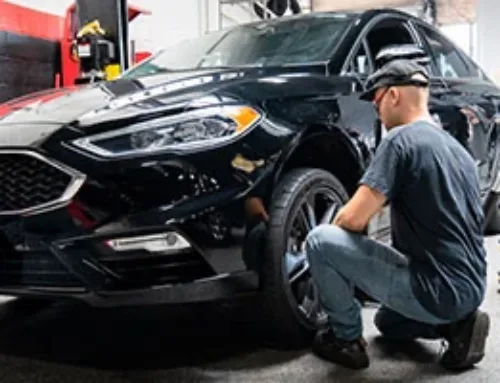Table of Contents
- When does windshield replacement become necessary?
- Laminated glass vs. tempered glass
- Different types of windshield damage
- Reasons for cracked windshield
- How much will it cost to replace a windshield?
- Why your windshield is important
- How to care for your vehicle’s windshield
- Don’t neglect your windshield wipers
- Learn how to decide when to repair or replace a cracked windshield
- Frequently Asked Questions
Have you been driving around with a cracked windshield and wondering if you should replace it? Maybe you’ve noticed a small chip steadily get larger over the course of several weeks or a crack slowly creeping its way across your windshield. Windshield damage is an unfortunate reality for most drivers, but it comes in a variety of types, from chipped glass to full-blown cracks and more. Keep reading to discover if your damaged windshield needs a full replacement or not.
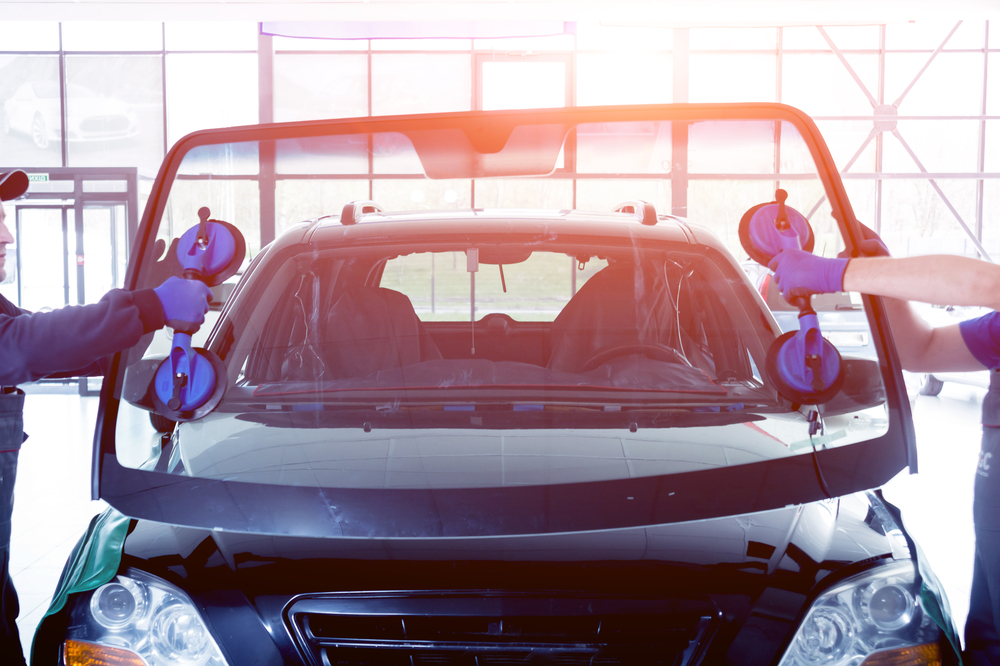
When does windshield replacement become necessary?
While there are specific laws about how much windshield damage is allowed, replacing your windshield might be necessary or desirable long before you get there. Some damage might be within the legal range but could be a serious annoyance and safety hazard. As far as the law goes, each state in the US has its own set of regulations regarding what is illegal to drive with and what is acceptable, but there are some general standards to be aware of.
- Large cracks greater than 3/4″ in diameter
- Cracks within 3″ of each other
- Any windshield damage that is in the driver’s line of sight might impair the driver’s view of the road. This area, directly above the steering wheel, is known as the critical vision area, and most damage to this area, even small chips or cracks, might be deemed illegal
While these are technically federal regulations, it is up to a police officer’s individual discretion. We’ll review some other types of damage that should make you consider windshield replacement, but first, it’s necessary to understand a little bit about the structure of your windshield and what makes it different from other types of auto glass.
Laminated glass vs. tempered glass
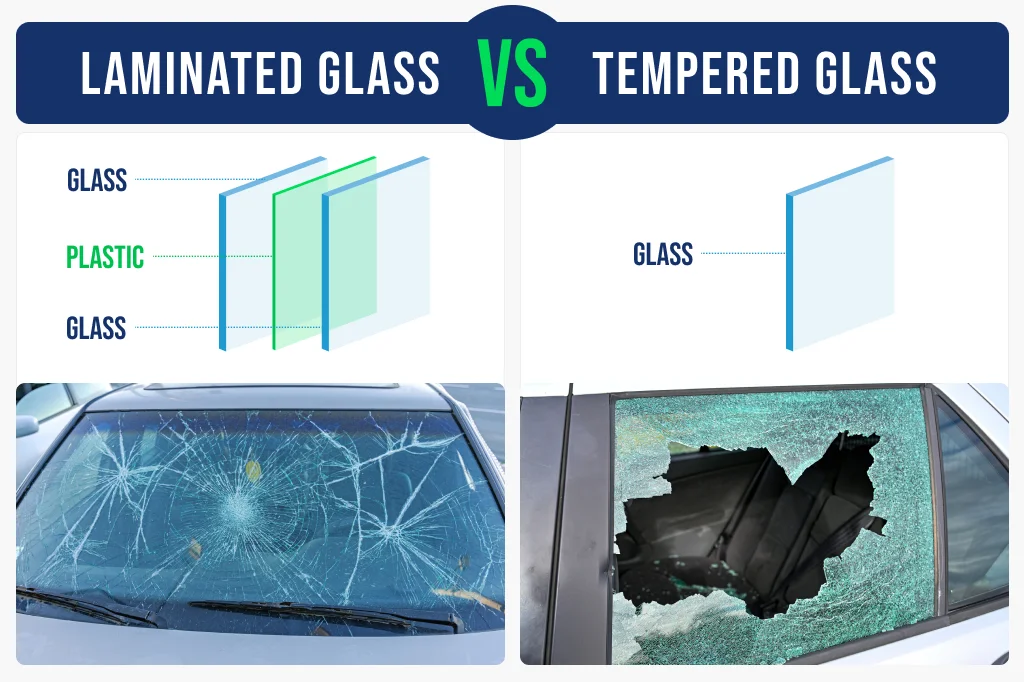
Most windshields are made with what is known as laminated glass. What seems like one piece of solid glass is a glass sandwich; two pieces of glass have a thin layer of plastic (or laminate) in between. This laminate acts like glue, holding the glass together and preventing shattering. It also helps to stop cracks or chips from going through the entire windshield and usually isolates it to the outer layer of the glass.
Tempered glass is also special, but not quite as special (sorry tempered glass). Typically, all other windows (besides the windshield) are made of tempered glass. This type of glass is created at high temperatures and then cooled rapidly. This makes the glass extra hard and is designed to shatter into small pebble-like pieces on impact. This might seem counter-intuitive, but it’s better to have little pebbles with fairly dull edges than long blades of broken glass that come to a sharp point sticking everywhere. Now that the little science lesson is over let’s talk about different types of windshield damage, windshield replacement, and windshield repair.
Different types of windshield damage
You might need to replace your windshield for quite a few reasons. Most vehicle owners think that only a large crack is enough reason to replace their car windshield. However, windshield replacement and windshield repair might be necessary for smaller problems or things you didn’t even think were a problem, to begin with.
Swirling or cloudy glass
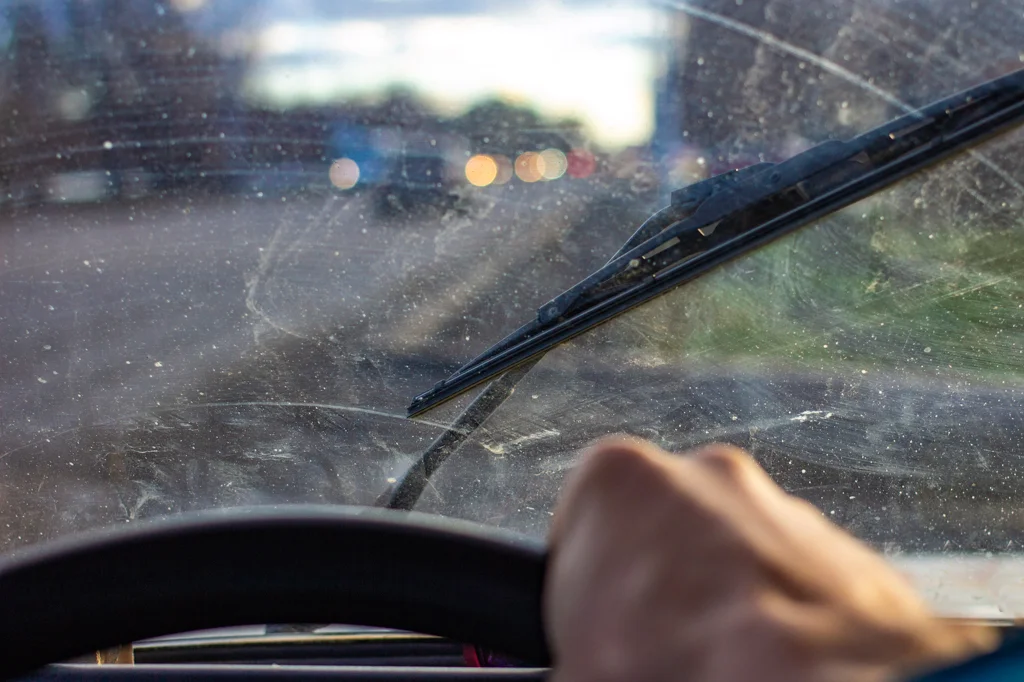
This particular type of windshield damage is less common and sometimes found on older cars and windshields. This is different than fog or condensation that might build up on the inside surface of your windshield due to temperature differences. Swirling or cloudy glass often happens because things such as dust, dirt, chemicals, and other debris get stuck below the outer layer of the windshield. Your windshield is actually a glass sandwich, and sometimes this debris gets stuck underneath the top layer of… bread. The debris typically gets in there through a small crack or chip that is left unattended, allowing the dust or dirt particles to slowly, over time, seep into the in-between layer.
This type of windshield damage occurs more frequently for people who drive often on dirt roads or near industrial areas where the air carries a lot of debris. If you have some swirling or cloudy glass, it doesn’t mean you need your windshield replaced immediately, but the problem will continue to worsen over time until it’s addressed.
Windshield chips
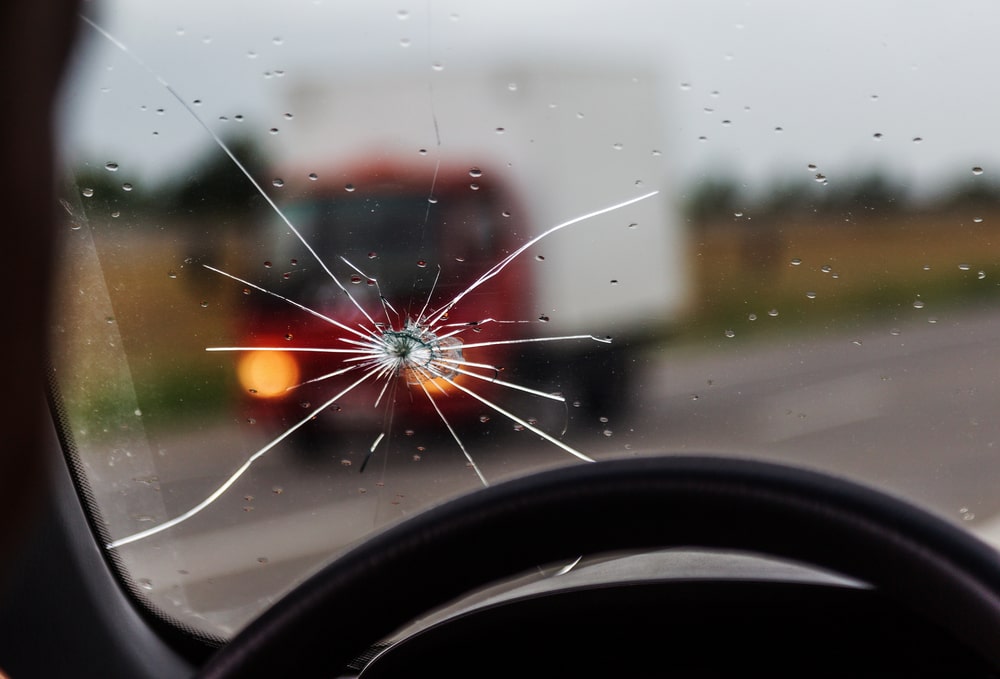
A windshield chip is probably the most common form of damaged windshield and one you’re likely familiar with. There are several types of chips, but most have the same root cause. If you often follow too close to the car in front of you you might notice that sometimes small rocks and things from the road are flicked up by the car’s wheels and sent careening towards your windshield. If you’re lucky, they bounce off, and there is no damage. The force is often strong enough to damage the outer layer of your windshield but not strong enough to get through to the inner glass.
- Pit (chip): A pit is when a small piece of glass is crushed and/or dislodged from the windshield. It might appear like a micro shatter and is often very small (the size of a pin)
- Bullseye: A bullseye is a larger chip with some discoloration, usually with a pit in the center. It looks, well, it looks a bit like an eye, hence the name. A bullseye usually ranges in size from a dime to a quarter
- Partial bullseye (half moon): This is a bullseye that usually doesn’t
- Combination break: A combination break is when a chip has one or more cracks radiating out from the center of it
Windshield cracks
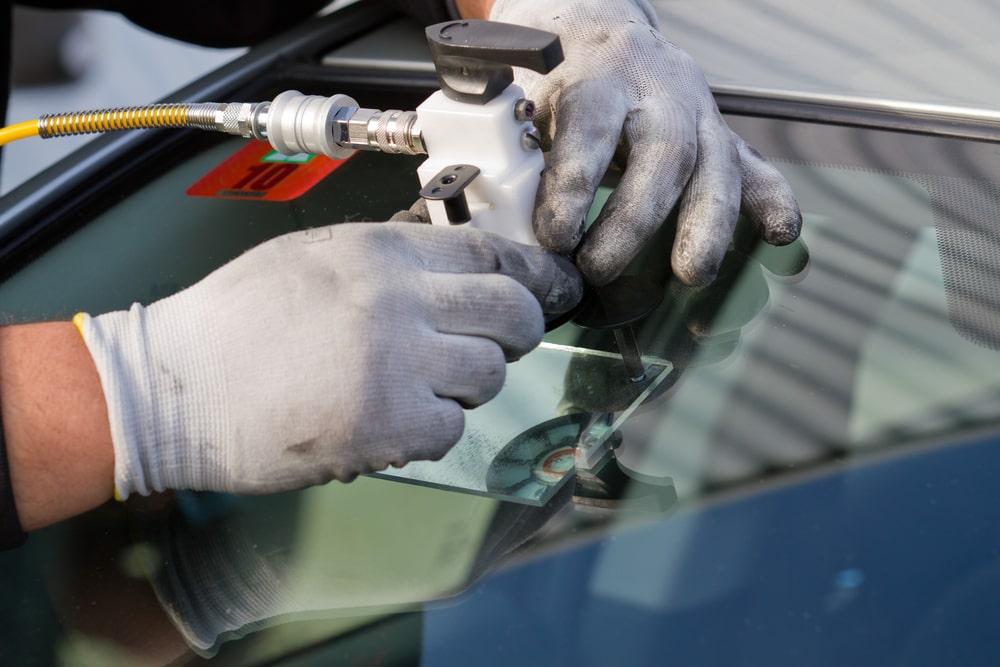
Windshield cracks come in different forms and different levels of severity.
- Floating crack: This is when a crack appears in the middle of your windshield or away from the edges
- An edge crack is when a crack starts or ends at the outer edge of your windshield. If you have an outer edge crack on your car windshield, you should consider getting a replacement windshield. This is because the structural integrity of your windshield is now diminished
- Long crack: A long crack is a, you guessed it, a crack that is longer than 6 inches or about the length of a dollar bill. If you have a crack that extends all the way from one end of your windshield to the other, then you should definitely consider windshield replacement
- Multiple cracks: If there are several cracks, even small ones, this will significantly reduce the structural integrity of the glass, and it should be replaced
Not every crack means you need to have your windshield replaced, but usually, a cracked windshield gets worse over time, so if you have questions, you should have it checked out at a reputable auto glass shop.
Reasons for cracked windshield
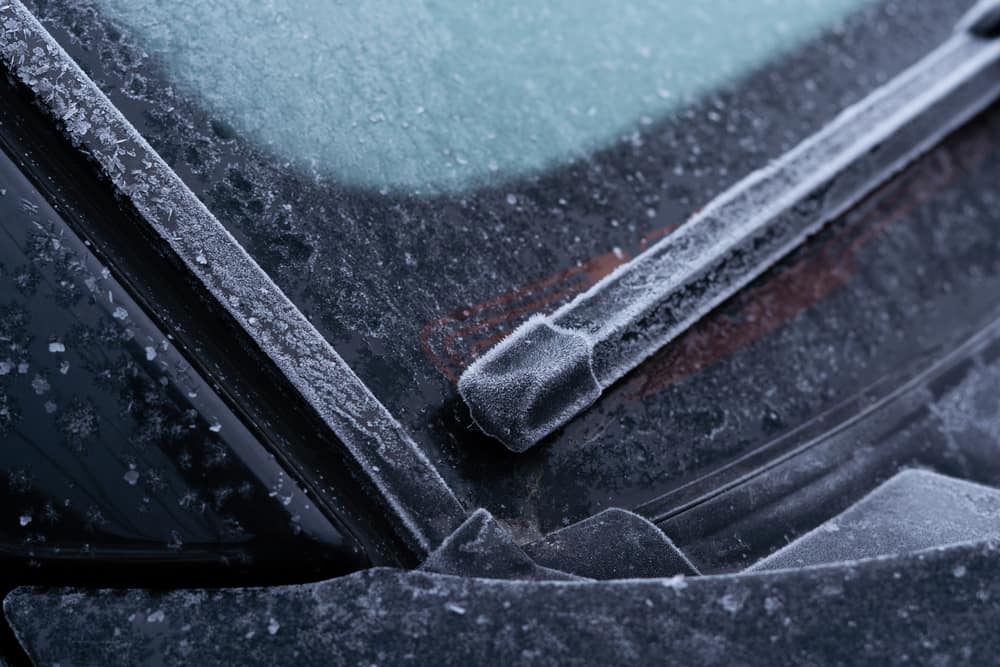
Temperature changes
Extreme temperature changes are among the most common causes of a windshield crack. You might have seen some videos recently of people trying to melt ice off of their cars using boiling hot water, only to bow their heads in shame when their windows shatter or their windshield cracks. Similarly, using cold water to wash your car on a very hot day can cause it to crack.
Pressure changes
Changes in pressure can also cause cracks. Strong winds blasting against the front of your car puts a lot of pressure on your windshield.
Auto glass defects
Defects in the auto glass can also result in a crack over time. While it may be difficult to notice these defects with the naked eye, they are probably there. Windshields tend to be weaker near the edges, making that area more susceptible to cracks.
How much will it cost to replace a windshield?

Windshield replacement is not cheap; prices range from $200 on the low end to upwards of $400 on the high end. There are several factors that can affect the cost of replacing a broken windshield, such as the make and model of your vehicle, any special features of the replacement windshield, and where you choose to get your windshield replacement service done. Windshield repair is often cheaper, so discuss with your local auto glass experts whether yours should be repaired or replaced.
Why your windshield is important

Your windshield does more than shield you from the wind as you drive. It also protects you from harmful dust and debris, such as rocks, sticks, and even insects, that would potentially hit you (which can be quite painful at high speeds). But your windshield (or windscreen as it’s known across the pond) does more than that. If your car were to roll over, the windshield prevents the roof of the car from caving in. The tough laminated glass of the windshield provides structural integrity to the cabin of the car.
Additionally, a vehicle’s windshield is designed to prevent a person’s body from being thrown from the vehicle in the event of a crash. Although hitting the windshield after being thrown from the back seat might seem painful, it is a far better option than being ejected from the vehicle. If you need a reminder to wear your seatbelt, this is it.
How to care for your vehicle’s windshield
- Clean your windshield regularly: Don’t let dust, dirt, and other debris build up on the surface
- Have chips or cracks dealt with quickly: As stated before, chips and cracks will invariably grow over time, so it’s best to deal with them when they first appear rather than let them get worse
- Avoid parking in direct sunlight on hot days: Direct sun will increase the temperature of your windshield, making it expand and then shrink again as it cools down. Over time this will warp the glass. Plus, the inside of your car will be blistering hot
- Replace your windshield wipers regularly: More on that below
Don’t neglect your windshield wipers
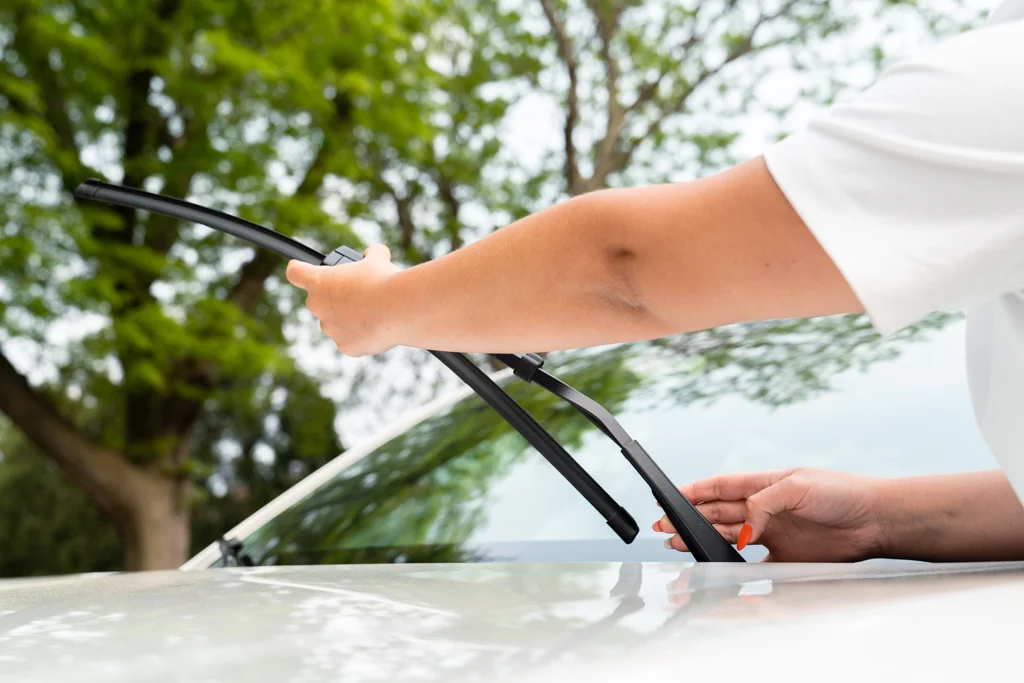
We all have that one friend who has never replaced their windshield wipers. You know, those that seem to bounce and skidder across the windshield and do nothing when it rains? In addition to being annoying and ineffective, an old set of windshield wipers can cause scratches in the glass. If enough of these scratches are in the driver’s line of sight, it can make the glass hard to see through, becoming a serious safety hazard. Over time these scratches can develop into cracks.
Learn how to decide when to repair or replace a cracked windshield
If your chipped or cracked windshield isn’t severe, you might be deciding whether to repair or replace it. Repairs vary greatly in cost, mostly depending on the size of the damage and the location. Most experts would recommend replacing a broken windshield rather than repairing it for several reasons. Windshield repairs are often a stop-gap measure, and many who have had their windshield repaired often find that the cracks or chips come back after a certain time.
Patch with windshield resin
If a small chip or crack has only damaged the outer layer of the glass, then there is a chance it can be repaired with specific windshield resin. The resin will fill in the chip or crack and dry clear, making it seem like it’s solid glass. Generally speaking, many auto glass repair experts tend to shy away from repairs with resin like this. Even an excellent repair job will be a weak point in the glass in the future, and many vehicle owners find that these chips and cracks will reappear a few months later.
Frequently Asked Questions
Is it safe to drive with a cracked windshield?
Yes. Generally speaking, it is safe unless the crack is in the critical vision area (the driver’s line of sight) or if the crack is larger than a dollar bill and extends all the way to the outer edge of the windshield. Small chips and cracks that are out of the critical vision area are not going to impair your driving performance in any way.
Is repairing a windshield worth the cost?
This depends on several factors, including your budget and the severity of the damage. While a technician may suggest that a small chip can be successfully repaired, keep in mind that resin is not a perfect solution, and you may be repairing the same damaged windshield again in a few months.
Is laminated glass better than tempered glass?
Neither is “better” than the other per se. They both have their advantages. It’s usually considered preferable to have your windshield made of laminated glass to prevent it from shattering.


